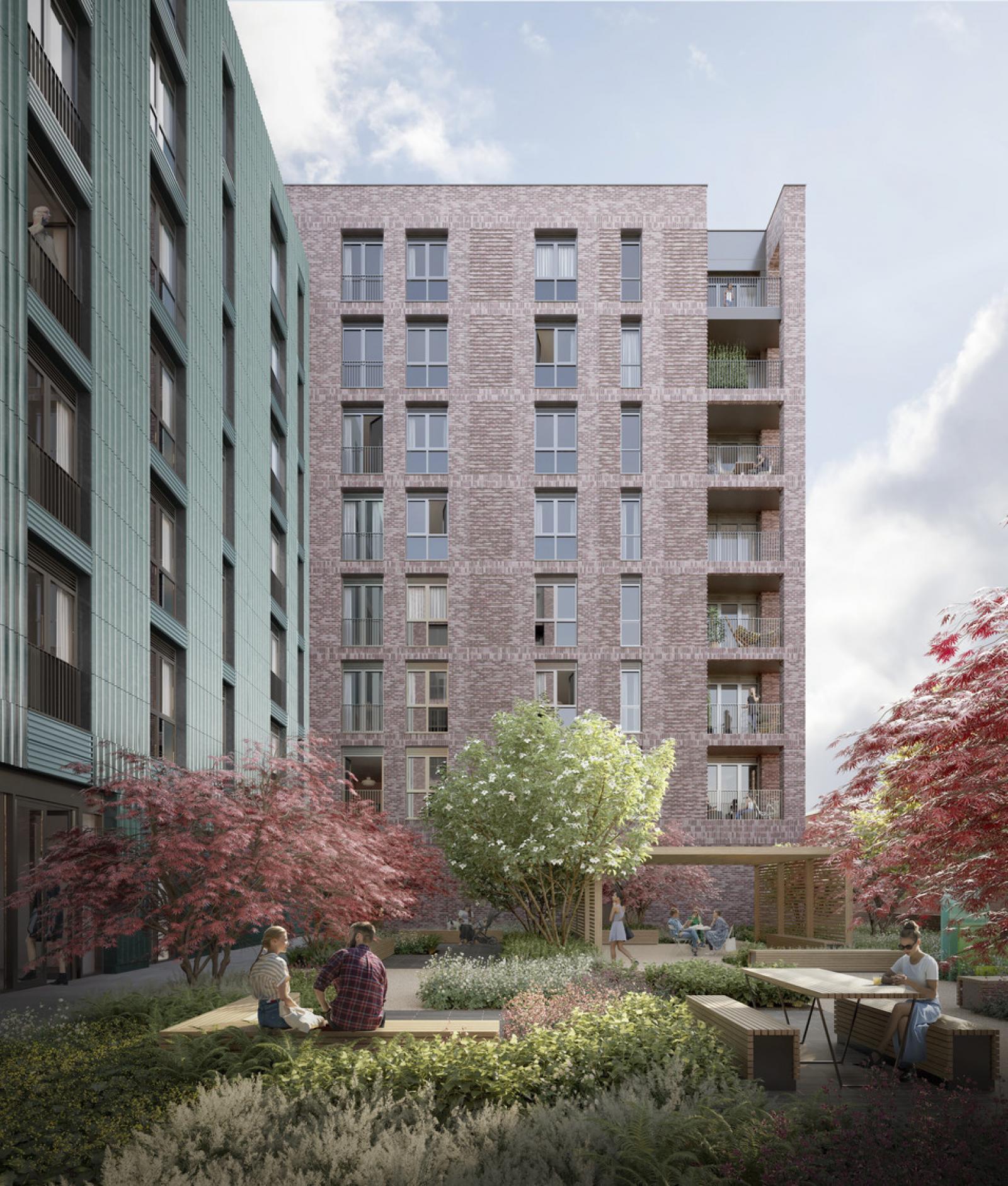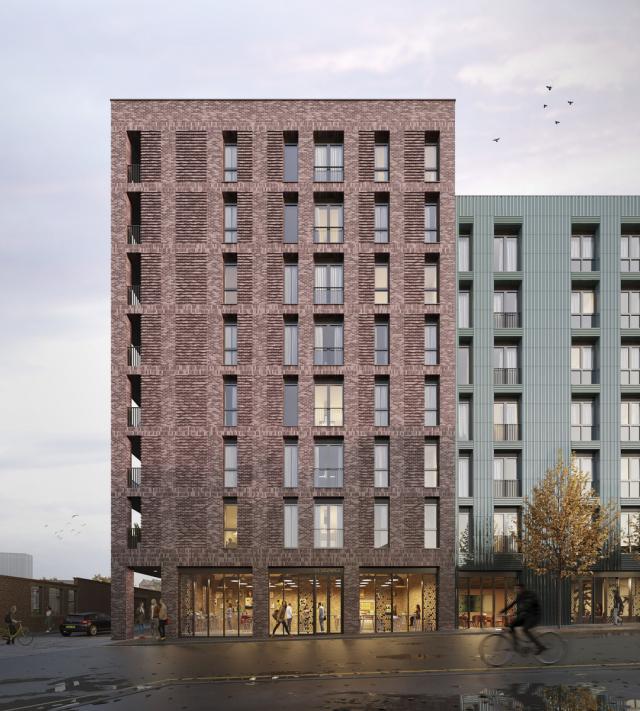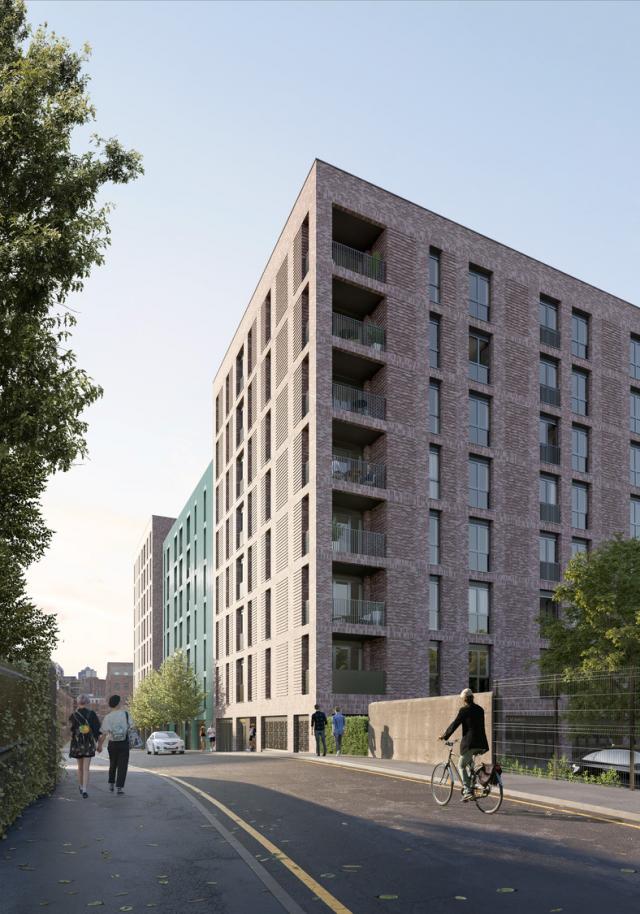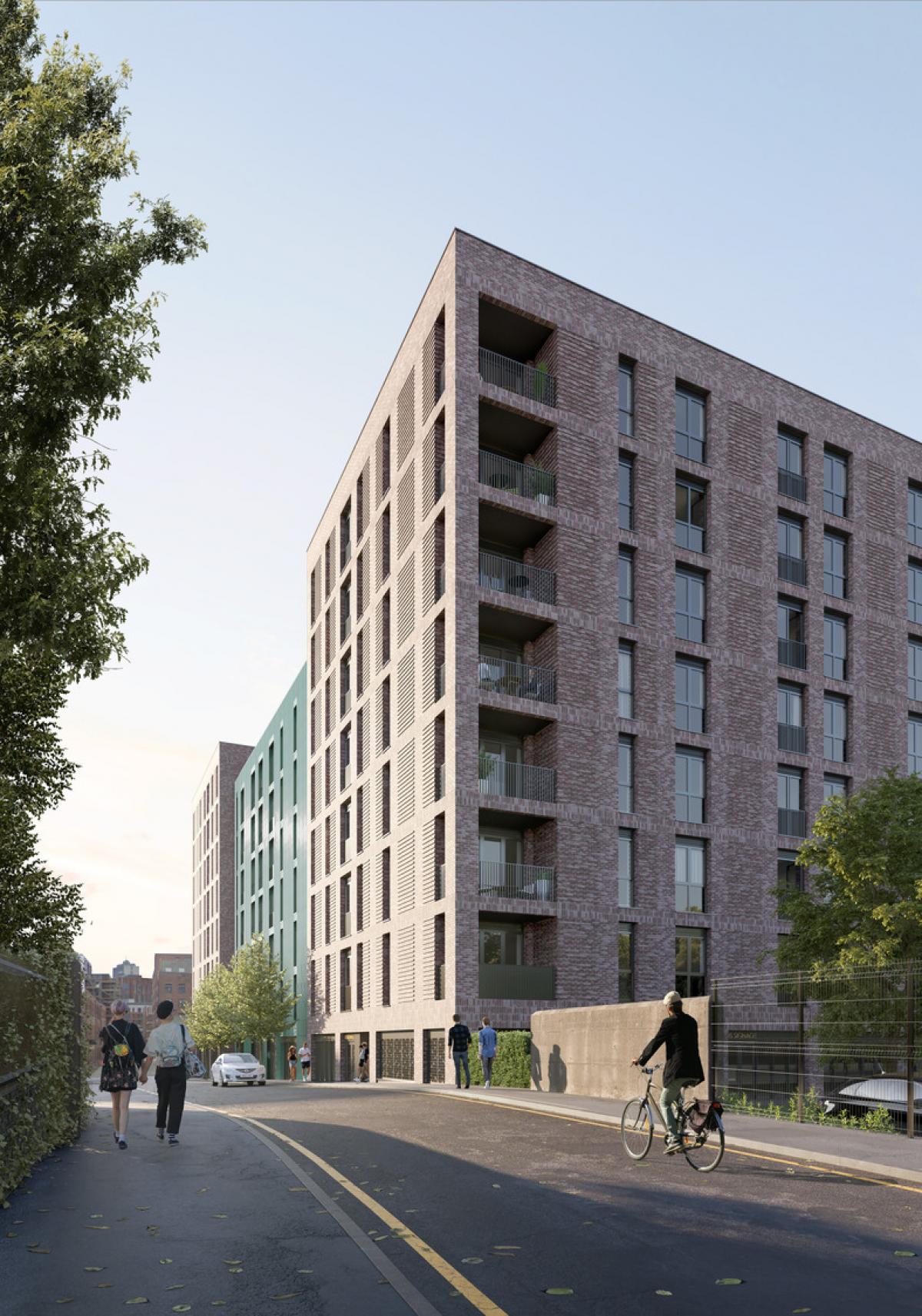
Ancoats is an area of Manchester that has undergone significant regeneration over the past few years.
Once the heart of Manchester’s manufacturing output during the height of the Industrial Revolution, the area experienced a significant decline during the latter half of the 20th century.
Over the past decade, however, strategic regeneration has given the area a new lease of life, with the development of new homes and the establishment of a number of independent bars and restaurants, helping create a vibrant and popular urban community.
Eliza Yard is the latest development to contribute to the ongoing regeneration of the area by creating a unique, new residential location.
Designed for Manchester Life, the proposals aim to deliver a diverse range of homes ranging from one to three-bedroom apartments, which will cater for the needs of a broad demographic from families to young professionals, the elderly, and empty-nesters. At ground floor level, 5,800 sq. ft of commercial space will be provided to create an active street frontage, helping further establish a sense of place and community on the site.


The site has been simply arranged with three ‘blocks’ forming a U shape allowing the creation of a new residents’ courtyard at the heart of the site and a new public realm at the east of the site, which will support the integration of the building into the neighbourhood.
The chosen material palette takes reference from the area’s industrial past with traditional red brickwork proposed for the two gable blocks, reflecting the material palette of the surrounding mills and former industrial buildings. A contrasting glazed green terracotta is proposed in the central section of the building, paying tribute to the former glassworks that would have been found in the area. The proposed brick will also be triangulated in profile, giving reference to cut glass patterns.
At ground floor level, laser cut security screen and glass manifestations are proposed, creating an interpretation of the site’s historic character, and continuing the façade narrative where there is more visibility.
The design for Eliza Yard adopts a Fabric First approach to create efficient, low carbon, comfortable and healthy homes.
The building envelope has been designed to enhance thermal insulation, acoustics, and air permeability while a large amount of roof mounted PV arrays will help further reduce the building’s carbon emissions.
Also featured within the proposals is mechanical ventilation with heat recovery and the use of heating programmers and room thermostats. Throughout the building low energy fitting and intelligent lighting controls will be provided along with metering and monitoring provisions for all systems.
The new homeowners of Eliza Yard will be able to enjoy efficient, low carbon, comfortable and healthy homes, as well as commercial space that will attract visitors and contribute to the ongoing regeneration of the area and vibrancy of the neighbourhood.

Matthew Burl
Matthew is an architect and director at Buttress who has led the successful design and delivery of new build and refurbishment projects across a range of cultural, academic and community-led sectors, both regionally and internationally.
He also coordinates the practice's sustainability activities and has led Buttress' B Corp journey helping the company achieve certification at the end of 2022.
Patrick Boyd
Patrick is a skilled senior architect whose experience includes a broad range of residential, commercial and masterplanning projects.
Image credits
Virtual Planit ©

